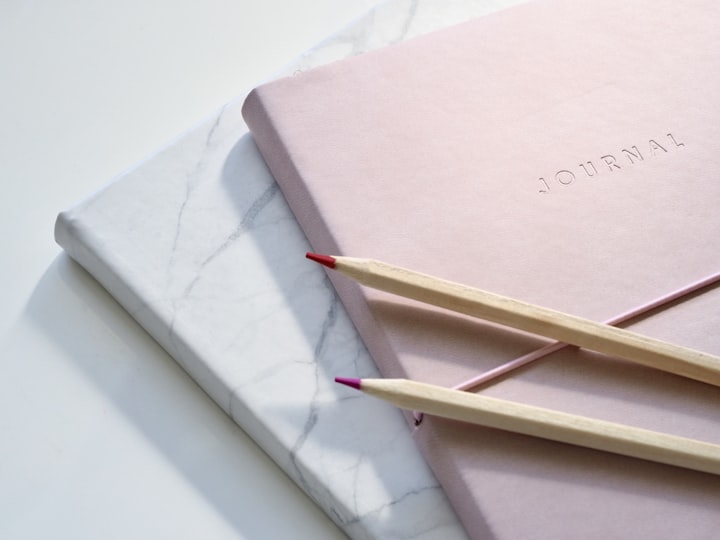Process Journaling; What Is It?
writing tips

Hi, it’s me, and for this post, I’ll be discussing something called process journaling.
What is Process Journaling?

What is it? Well, process journaling is writing about your writing. Metawriting, if you will.
Now, I’m sure many of you haven’t heard the term before, and I don’t blame you. I didn’t know about it until I attended that writing conference a few years ago.
I took lots of notes as the speaker went through the spiel about it, and at the first chance, I tried process journaling. I was impressed by it and kept doing it for a while.
I filled several journals and had them by my bed for quite a while.
How to Structure It

So, what you do is after finishing your story or section, you set aside some time to write down various aspects of what you have written down for whatever time frame it was. And it’s divided into different categories.
This is the structure in which I do process journaling:
- Date: Day, month, year, the usual.
- Story title: Whatever the name of your story is, or TBD if you don’t have one yet. You can also include the subtitles or series name if you wish.
- Drafting stage: Are you just starting? Draft two? Five?
- Location: Are you at home? At a park? Coffee shop? The location in which you are writing can impact how much you write.
- Mood: What I mean is what mood you’re in while you’re writing. Happy? Sad? Angry? Indifferent? Different emotional states can impact the tone of your writing.
- Summary: A quick explanation about what happened in the section of your story or the full story if it’s short.
- Theme: Is your story happy? Funny? Sad? Heartwarming? Adventurous?
- Seeds planted: Has anything been set in place for the future? A foreshadow of something big? Small? In another book?
- Character development: How have your characters grown? Did they have to apologize? Fight with a friend/family member? Realize the error in their ways? Discover previously unknown emotions?
- Tension upped: What stakes have been raised? Are the characters fighting against an enemy? Do they not like each other? Are they suppressing feelings?
- Mystery deepened: Are there any unanswered questions in your story? Are they from the beginning, or have they just been brought up?
- Comments: What do you have to say about the progression of your story? Keep in mind that you don’t have to be happy about it for it to be necessary.
Maybe you are already doing something similar—more power to you. You might add a couple of sections to your journal entries. And if you haven’t done this, no worries. You can start in the middle of your story. I have.
Advantages of Process Journaling

There are a few advantages to process journaling.
Deeper Thinking
One of the most significant advantages is that it helps you think deeply about what you are writing. Consider new possibilities or subplots. The overall tone. Title change. POV switches
When I did process journaling, I was forced to think about aspects I hadn’t considered, making me a better writer overall.
Backup
Another advantage is it can act as a backup if something happens to your story and you no longer have it. Of course, it won’t be the exact same as the original, but you will be able to use the summaries as a frame of reference.
Or you can use it as a launchpad for your second draft, so exactness won’t be an issue. I think that’s a brilliant idea to try.
Fix Inconsistencies
Another advantage is it can help you find unintended mistakes in your writing, such as plot holes. Finding or avoiding issues is much easier when your story is broken down into sections.
But It’s Not an Outline

Do not confuse this for an outline, though. Outlining involves how the story is going to move in a broad sense. Like the bones, it allows you to figure out the big-picture events of your story.
Process journaling dives deeper into the meat of the writing, building up the muscles. And you don’t need to outline anything in order to do it, either. Instead, it lets you discover details you might’ve missed otherwise.
Finishing Up
Unlike most writing techniques, I can’t find a downside to doing this, or else I would tell you. There are just too many upsides to process journaling.
I have no idea why this method isn’t discussed more. I haven’t even seen an article about process journaling in Writer’s Digest, and they talk about all things related to writing!
Well, until next time, keep writing!
***
Thank you for reading! I hope you enjoyed it. Subscribe for more content!
About the Creator
Amethyst Champagne
I create fiction, short stories, poetry, and more!
Subscribe to The Life of a Gem and The Writer's Corner for exclusive content!
And visit my website if you need help editing your fantastic story!






Comments
There are no comments for this story
Be the first to respond and start the conversation.